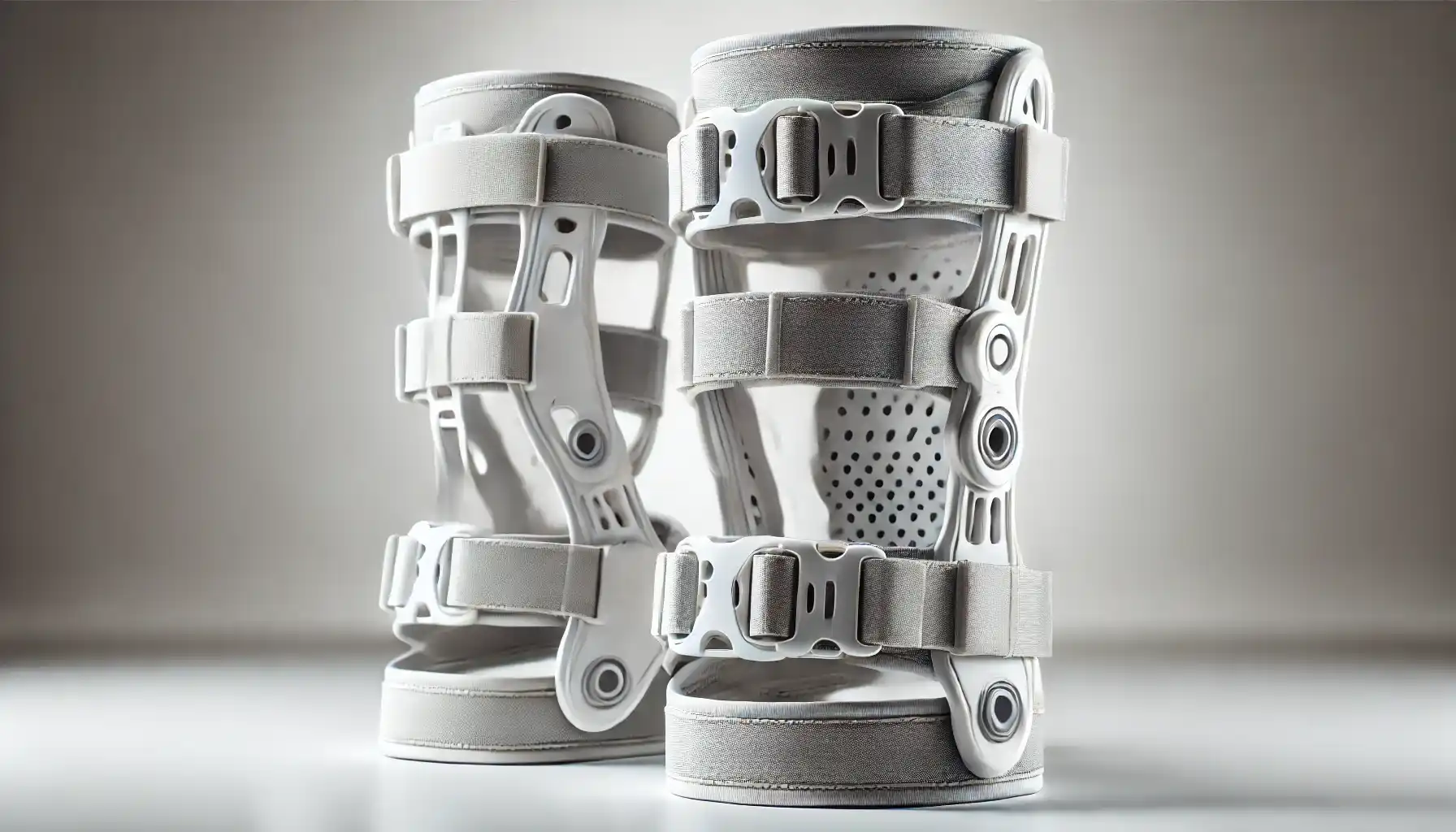Custom Vs. Over-the-Counter Orthopedic Braces: Which is Right for You?
The choice of orthopedic braces is not one-size-fits-all—it is a decision as difficult and essential as understanding the nuances behind what is a proof coin. Each option, whether custom-fitted or over-the-counter (OTC), has distinct benefits and limitations that can impact your recovery or overall orthopedic health.
But how do you determine which option aligns best with your medical needs? Today we are going to explore the clinical differences, practical implications, and key factors in this decision.
Custom Orthopedic Braces: Personalized Precision for Complex Cases
When a patient’s condition requires special support, custom orthopedic braces are often the optimal solution. These devices are created to fit the unique anatomical structure of the person for more precision and effectiveness.
What Makes Custom Braces Superior?
Individualized Fit and Comfort
Custom braces are designed using advanced imaging techniques such as 3D scanning or detailed plaster molds. This ensures an exact fit that reduces pressure points, improves compliance, and minimizes the risk of secondary complications, e.g., skin irritation or improper joint alignment.
For example, for patients with scoliosis, a custom thoracolumbosacral orthosis (TLSO) brace can precisely correct spinal curvature and halt progression, which would be impossible with generic designs.

Targeted Therapeutic Benefits
These braces are specifically engineered to address your condition, e.g., post-operative stabilization, correction of biomechanical dysfunction, chronic joint instability, etc.
In cases of severe osteoarthritis, a custom unloader knee brace can effectively shift weight away from the damaged compartment that will alleviate pain and preserve joint function.
Durability and Adaptability
Made with high-grade materials like carbon fiber or medical-grade polymers, custom braces are built to withstand long-term use. Additionally, they can be adjusted over time to accommodate changes in your condition or anatomy, e.g., muscle atrophy or swelling.
The Downsides to Consider
Custom braces, while superior in precision, require a significant financial investment. They are also not immediately available, often requiring weeks for fabrication and fitting—a potential drawback for acute injuries.
Over-the-Counter Orthopedic Braces: Convenience and Accessibility
For patients with less complex needs, OTC braces are a practical and affordable alternative. These pre-manufactured devices provide generalized support and are widely available in pharmacies and online.
When Are OTC Braces Appropriate?
Immediate Availability for Acute Injuries
OTC braces are particularly useful for managing mild sprains, strains, or temporary joint instability. They offer immediate support and can help reduce swelling or pain during the acute phase of injury.
For example, a standard elastic ankle brace can provide sufficient compression and stability for a Grade I ankle sprain. This enables faster recovery.
Cost-Effective Solution for Short-Term Needs
The affordability of OTC braces makes them an accessible option for patients with temporary or moderate conditions, e.g., patellar tendinitis or carpal tunnel syndrome.
Ease of Use
Many OTC braces are designed with adjustable straps or elastic material. So patients can achieve a decent fit without professional assistance.
Limitations of OTC Braces
While convenient, OTC braces lack the precision of custom devices. Poor fit or inadequate support can lead to complications such as discomfort, restricted blood flow, or even exacerbation of the condition. For example, a poorly fitted wrist brace may compress the median nerve, worsening symptoms of carpal tunnel syndrome.
Key Factors to Consider in Your Decision
Severity of Your Condition
Are you dealing with a complex issue such as ligament tears, post-surgical recovery, or advanced arthritis? Custom braces provide the necessary precision and therapeutic support for such cases.
Conversely, for minor injuries or temporary use, OTC braces may be sufficient.
Budget Constraints
Custom braces are an investment, often costing hundreds or thousands of dollars. However, they may be covered by insurance if deemed medically necessary.
OTC braces, while more affordable upfront, may not provide long-term value if your condition worsens.
Professional Advice
Have you consulted a specialist? Orthopedic surgeons, physiatrists, or physical therapists can evaluate your condition and recommend the most suitable type of brace based on clinical evidence and your lifestyle needs.
Long-Term vs. Short-Term Use
Are you looking for a solution to manage chronic conditions like rheumatoid arthritis, or do you need temporary stabilization after a sports injury? Custom braces shine in long-term applications, whereas OTC options are ideal for transient needs.
Feature | Custom Braces | OTC Braces |
Cost | High | Low |
Fit | Tailored to anatomy | Generalized |
Ideal Use | Chronic or severe cases | Mild or temporary issues |
Availability | Weeks (fabrication time) | Immediate |
Insurance and Reimbursement: What You Need to Know
The cost of orthopedic braces can be a significant consideration for many patients, especially when deciding between custom and over-the-counter (OTC) options. How can insurance and reimbursement work help reduce out-of-pocket expenses and ensure you receive the necessary support for your condition?
Custom Braces and Insurance Coverage
Custom orthopedic braces are often covered by insurance when they are deemed medically necessary. This means a healthcare provider, such as an orthopedic surgeon or physical therapist, must document and justify the need for a custom device.
Steps to Secure Coverage for Custom Braces:
Obtain a Prescription: Your physician must write a prescription detailing why a custom brace is necessary. This typically includes a diagnosis, such as severe osteoarthritis, ligament injuries, or post-surgical recovery needs.
Verify Coverage with Your Insurer: Contact your insurance provider to confirm whether your plan includes coverage for durable medical equipment (DME). Ask for specifics, such as:
The percentage covered (e.g., 80% of the cost).
Any deductible or copayment requirements.
Whether prior authorization is needed.
Work with an Approved Provider: Most insurance companies require you to purchase the brace from an in-network supplier or a DME provider approved by your plan.
Submit Necessary Documentation: Ensure all documentation, including the prescription, diagnostic reports, and invoices, is submitted promptly.
Over-the-Counter Braces and Insurance
Insurance coverage for OTC braces is less common, as these devices are typically considered non-essential or over-the-counter medical supplies. However, certain scenarios may qualify for partial reimbursement:
When an OTC brace is prescribed by a physician.
If the brace is purchased as part of a physical therapy program or post-surgical care plan.
Even if your insurance does not cover OTC braces directly, you may be able to use a Health Savings Account (HSA) or Flexible Spending Account (FSA) to pay for them. These accounts allow you to use pre-tax dollars for eligible medical expenses.

How to Appeal a Denied Claim
If your insurance provider denies coverage for a custom brace or a prescribed OTC device, you have the right to appeal.
Review the Denial: Understand why the claim was denied—common reasons include missing documentation or failure to meet medical necessity criteria.
Gather Supporting Evidence: Ask your healthcare provider to provide additional documentation, e.g., medical records, imaging reports, or a letter explaining the necessity of the brace.
File an Appeal: Submit an appeal to your insurer, including all supporting documents. Most insurers provide detailed instructions on how to appeal denials.
So, the process can be complex, but with proper documentation, communication, and persistence, you can minimize costs. Custom braces are more likely to qualify for coverage due to their medical necessity, while OTC options may require alternative payment strategies like HSAs or FSAs.
Which Option Is Right for You?
Choosing between a custom or OTC orthopedic brace is not a matter of convenience—it is a decision that impacts your mobility, comfort and overall quality of life. Ask yourself:
Does my condition require tailored support and durability?
Do I want to invest in long-term orthopedic health?
Have I sought professional advice to ensure the best choice?
For complex, chronic conditions or post-surgical recovery, custom braces are the best. Their ability to provide precise support and adaptability ensures effective management of even the most challenging orthopedic cases. However, if your needs are less specialized, OTC braces offer a practical and accessible solution.
So, the best brace is the one that aligns with your medical needs, lifestyle and goals. Speak with your healthcare provider to make a choice—because when it comes to orthopedic care, one size certainly does not fit all.
More articles
The Benefits of Regenerative Medicine in Orthopedic Treatment
Orthopedic injuries and conditions can be debilitating, affecting the quality of life and mobility of individuals. Traditional treatments for orthopedic issues often involve pain medications, physical
Read moreThe Ultimate Guide to Orthopedic Care: Everything You Need to Know
Orthopedic care is a specialized field of medicine that focuses on the diagnosis, treatment, and prevention of disorders related to the musculoskeletal system. This includes bones, joints, muscles, li
Read moreUnderstanding Common Orthopedic Injuries: Prevention, Treatment, and Recovery Tips
Learn about common orthopedic injuries, including sprains, fractures, ACL tears, and more. Discover prevention strategies, treatment options, and recovery tips to stay active and pain-free. Read the u
Read more
